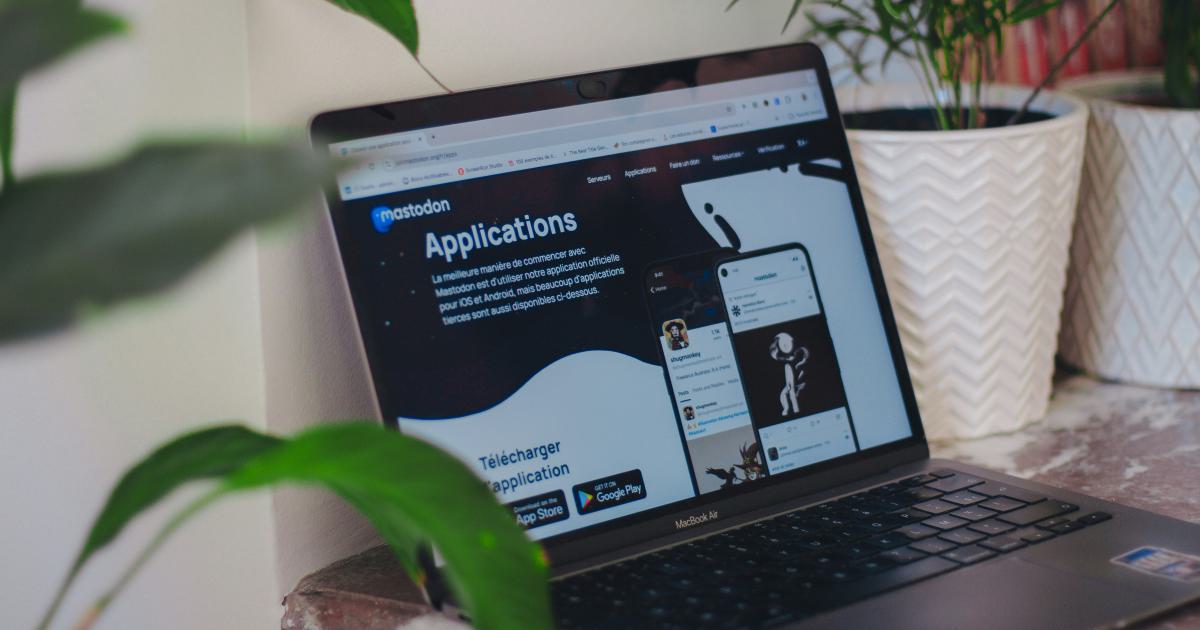Mastering the Art of Crawlability for SERPs


Understanding Crawlability and Its Importance
Crawlability is a critical aspect of Search Engine Optimization (SEO) that often gets overlooked, yet it plays a vital role in ensuring your website's visibility and ranking in Search Engine Results Pages (SERPs). In essence, crawlability refers to the ease with which search engine bots can navigate and index your website's content, allowing them to accurately understand and categorize your pages for optimal visibility.

At the heart of crawlability lies the ability of search engines to efficiently access and understand the structure, content, and relationships within your website. By optimizing your site's crawlability, you can enhance the likelihood of your pages being discovered, indexed, and subsequently ranked higher in relevant SERPs, ultimately driving more targeted traffic to your online presence.
The Consequences of Poor Crawlability
When a website's crawlability is suboptimal, it can have significant consequences for its overall SEO performance. Some of the key issues that can arise from poor crawlability include:
Incomplete Indexing: If search engine bots struggle to effectively crawl and index your website's content, your pages may not be fully represented in search engine databases. This can result in a significant portion of your content being invisible to potential customers.
Decreased Ranking Potential: Search engines prioritize websites that are easily crawlable and accessible, as they are better able to understand and interpret the content. Poorly crawlable sites may struggle to achieve high rankings, even if they have valuable and relevant content.
Missed Opportunities: When search engines cannot efficiently navigate and catalog your website, you miss out on valuable opportunities to showcase your content, products, or services to users actively searching for related information.
Technical SEO Challenges: Crawlability issues can often be symptomatic of broader technical SEO problems, such as site structure, internal linking, or technical barriers that impede search engine bots.
By understanding and addressing these challenges, you can significantly improve your website's crawlability and, in turn, enhance its visibility and performance in SERPs.
Key Factors Influencing Crawlability
To master the art of crawlability for SERPs, it's crucial to understand the primary factors that impact a website's ability to be effectively crawled and indexed by search engines. Let's explore these key elements in detail:
Site Structure and Navigation
The structure and navigation of your website play a pivotal role in its crawlability. A well-organized, intuitive site structure with clear hierarchies and logical navigational paths makes it easier for search engine bots to efficiently explore and understand your content.

Key considerations for optimizing site structure and navigation include:
- Implementing a clear, user-friendly site architecture
- Utilizing effective internal linking to establish clear content relationships
- Ensuring seamless navigation through the use of intuitive menus and breadcrumbs
- Avoiding overly complex or convoluted navigation, which can confuse both users and search engines
Technical Website Factors
Numerous technical aspects of your website can impact its crawlability. Ensuring your site is technically sound and optimized for search engine bots is crucial for improving its visibility in SERPs.
Some critical technical factors to address include:
- Ensuring your website is mobile-friendly and responsive
- Implementing a fast-loading website with optimized page speed
- Addressing any crawl errors or broken links
- Properly configuring your website's robots.txt and XML sitemaps
- Ensuring your website is secure (HTTPS protocol)
- Optimizing image and resource file sizes to enhance loading times

By addressing these technical aspects, you can create a more crawler-friendly environment, making it easier for search engines to effectively index your website's content.
Content Depth and Relevance
The depth and relevance of your website's content also play a significant role in its crawlability. Search engines prioritize websites that offer comprehensive, informative, and relevant content to users.
Strategies for improving content depth and relevance include:
- Creating in-depth, well-researched articles and resources
- Addressing the core topics and subtopics related to your industry or niche
- Ensuring your content is genuinely useful, informative, and engaging for your target audience
- Regularly updating and refreshing your content to maintain its relevance

By providing valuable, comprehensive, and up-to-date content, you can signal to search engines that your website is a reliable and authoritative source, enhancing its crawlability and overall visibility in SERPs.
Link Structure and Internal Linking
The way your website's content is linked, both internally and externally, can significantly impact its crawlability. Effective link structure and internal linking help search engines understand the relationships between your pages, making it easier for them to navigate and index your content.
Key considerations for optimizing link structure and internal linking include:
- Implementing a logical, hierarchical internal linking structure
- Ensuring your most important pages are easily accessible through your navigation and internal links
- Avoiding orphan pages (pages with no internal links pointing to them)
- Strategically using anchor text to provide context about the linked content
- Monitoring and addressing any broken or outdated external links

By optimizing your website's link structure and internal linking, you can create a more coherent and crawlable environment, enhancing the search engines' ability to understand and index your content effectively.
Robots.txt and XML Sitemaps
Two crucial technical elements that directly impact crawlability are the robots.txt file and XML sitemaps. These tools serve as communication channels between your website and search engine bots, providing them with valuable information to guide the crawling and indexing process.
Robots.txt File: The robots.txt file is a text file that provides instructions to search engine bots about which pages or directories they should or should not crawl. By properly configuring your robots.txt file, you can ensure that search engines have access to the content you want to be indexed while excluding any sensitive or unnecessary pages.
XML Sitemaps: XML sitemaps are files that list the URLs of your website's pages, along with additional metadata such as the last modified date, change frequency, and priority. Submitting a well-structured XML sitemap to search engines helps them better understand the structure and content of your website, improving the chances of your pages being crawled and indexed efficiently.

By leveraging these two crucial elements, you can provide search engines with clear guidance and information, enhancing the overall crawlability of your website.
Implementing Crawlability Strategies
Now that we've explored the key factors influencing crawlability, let's dive into the practical strategies you can implement to optimize your website's crawlability and improve its visibility in SERPs.
Conduct a Crawlability Audit
The first step in mastering crawlability is to perform a comprehensive crawlability audit of your website. This assessment will help you identify any existing issues or areas for improvement, allowing you to develop a targeted strategy for optimizing your site's crawlability.
During the crawlability audit, consider the following:
- Analyze your website's structure and navigation
- Identify any technical issues, such as broken links or slow page speeds
- Evaluate the depth and relevance of your website's content
- Assess the quality and structure of your internal linking
- Review your robots.txt file and XML sitemaps

By conducting a thorough crawlability audit, you can gain a deeper understanding of your website's strengths and weaknesses, enabling you to prioritize and address the most critical areas for improvement.
Optimize Site Structure and Navigation
One of the most impactful ways to enhance crawlability is to optimize your website's structure and navigation. Implement a clear, intuitive, and hierarchical site architecture that makes it easy for search engine bots to explore and understand your content.
Key strategies for optimizing site structure and navigation include:
- Organize your content into logical, well-structured categories and subcategories
- Establish clear navigational paths with intuitive menus and breadcrumbs
- Ensure important pages are easily accessible from your main navigation
- Eliminate orphan pages and dead-end content areas
- Implement effective internal linking to create clear content relationships

By creating a user-friendly and crawler-friendly site structure, you can significantly improve the ability of search engines to efficiently explore and index your website's content.
Address Technical Website Factors
Addressing technical website factors is crucial for enhancing crawlability. Ensure your website is optimized for search engine bots by focusing on the following:
Mobile-Friendliness and Responsiveness: Verify that your website is mobile-friendly and provides a seamless user experience across different devices.
Page Speed Optimization: Implement strategies to improve your website's loading speed, such as optimizing images, minifying code, and leveraging caching.
Crawl Error Identification and Resolution: Use tools like Google Search Console to identify and address any crawl errors or broken links on your website.
Robots.txt and XML Sitemaps: Properly configure your robots.txt file to provide clear instructions to search engine bots, and submit a well-structured XML sitemap to improve indexing.
HTTPS Implementation: Ensure your website is secured with an HTTPS protocol to establish trust and enhance crawlability.

By addressing these technical factors, you can create a more crawler-friendly environment, making it easier for search engines to effectively index and rank your website's content.
Enhance Content Depth and Relevance
Providing in-depth, relevant, and valuable content is crucial for improving crawlability. Focus on creating comprehensive, well-researched content that addresses the core topics and subtopics within your industry or niche.
Strategies for enhancing content depth and relevance include:
- Conducting thorough keyword research to identify the most relevant and high-intent search queries
- Producing long-form, informative articles that cover a topic in-depth
- Regularly updating and refreshing your content to maintain its relevance
- Incorporating multimedia elements (e.g., images, videos, infographics) to enhance the user experience
- Leveraging internal linking to establish clear content relationships and improve crawlability

By offering your audience high-quality, comprehensive, and up-to-date content, you can signal to search engines that your website is a reliable and authoritative source, ultimately enhancing its crawlability and visibility in SERPs.
Optimize Link Structure and Internal Linking
The way your website's content is linked, both internally and externally, can have a significant impact on its crawlability. Implement strategies to optimize your link structure and internal linking to make it easier for search engines to navigate and understand your content.
Key tactics for optimizing link structure and internal linking include:
- Establishing a logical, hierarchical internal linking structure
- Ensuring important pages are easily accessible through your navigation and internal links
- Using descriptive and contextual anchor text to provide clarity about the linked content
- Regularly monitoring and addressing any broken or outdated external links
- Avoiding orphan pages and ensuring all content areas are well-connected

By implementing these strategies, you can create a more coherent and crawlable website, making it easier for search engines to efficiently explore and index your content.
Monitor and Continuously Improve
Mastering crawlability is an ongoing process that requires continuous monitoring and improvement. Regularly assess the performance of your crawlability optimization efforts and make adjustments as needed.
Key activities for ongoing crawlability monitoring and improvement include:
- Regularly reviewing your website's Google Search Console data to identify any crawl errors or indexing issues
- Monitoring your website's rankings and visibility in SERPs to gauge the impact of your crawlability optimizations
- Conducting periodic crawlability audits to identify new areas for improvement
- Staying up-to-date with the latest search engine algorithms and guidelines to ensure your crawlability strategies remain effective

By adopting a continuous improvement mindset and regularly monitoring your website's crawlability performance, you can ensure your online presence remains highly visible and accessible to search engines over time.
Conclusion
Mastering the art of crawlability for SERPs is a crucial aspect of effective SEO that often goes overlooked. By understanding the key factors that influence crawlability, implementing targeted strategies, and continuously monitoring and improving your website's performance, you can significantly enhance your online visibility and drive more targeted traffic to your business.
Remember, crawlability is the foundation upon which your website's search engine rankings are built. By optimizing your site's structure, content, and technical elements, you can create a more crawler-friendly environment, enabling search engines to efficiently discover, index, and ultimately rank your pages higher in the SERPs.
Embrace the strategies outlined in this comprehensive guide, and take the necessary steps to master the art of crawlability for your website. Doing so will not only improve your search engine visibility but also deliver a better user experience for your audience, ultimately driving more qualified leads and conversions for your business.